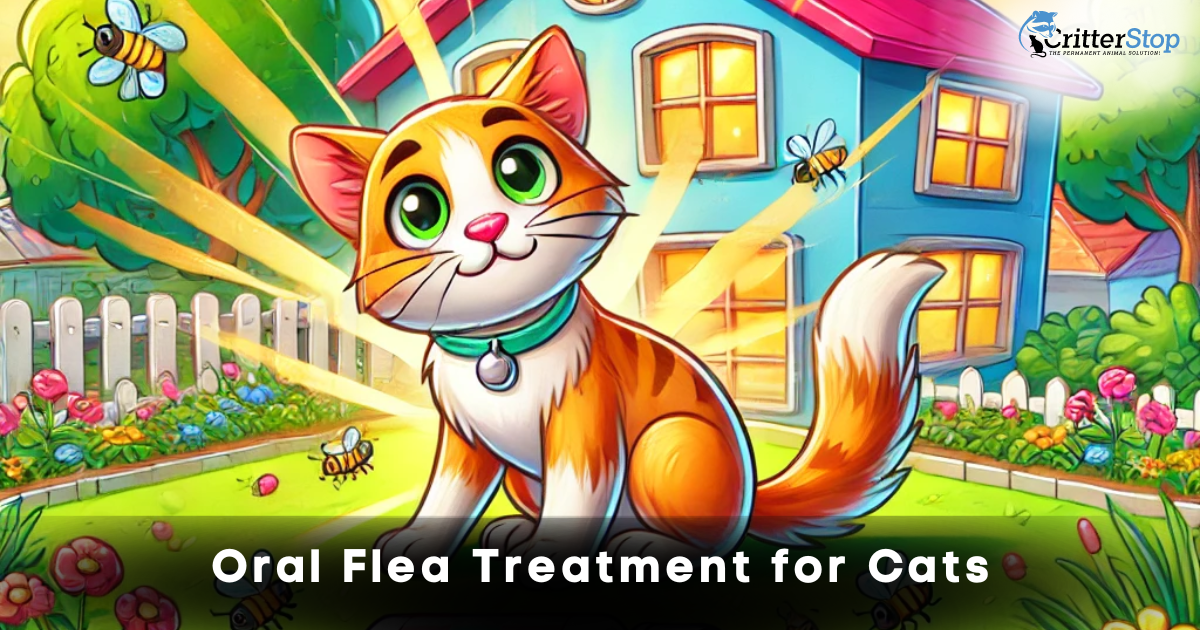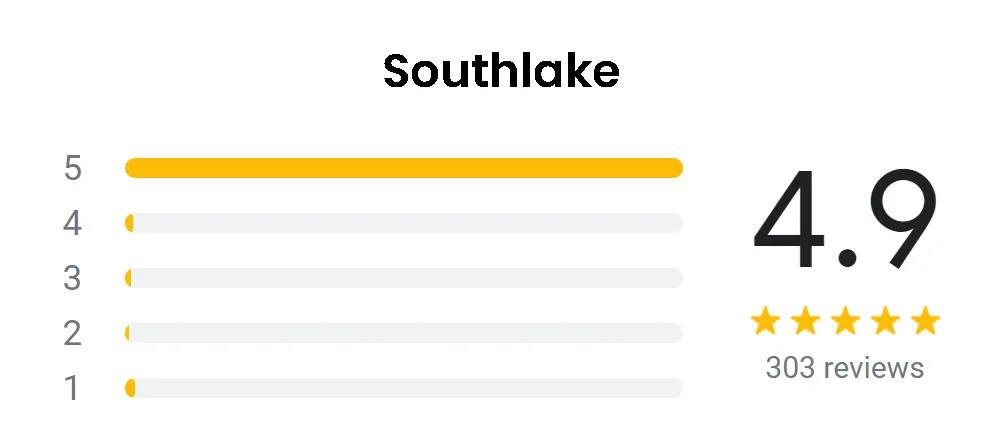
Cats are beloved family members who unfortunately are susceptible to pesky fleas. Oral flea treatments offer a convenient solution for pet owners seeking effective protection. These medications come in tablet or chewable form, making administration simple and mess-free.
Oral flea med for cats is made to provide full-body coverage. The effects begin within a couple of hours after the treatment is consumed and last for one month. The medicine components are introduced in their bloodstream so fleas die when they bite the pet. This method ensures fleas are eliminated regardless of where they attach to the cat.
Many cat owners prefer oral flea treatments due to their ease of use and lack of residue on the cat's fur. These products are also waterproof, maintaining their effectiveness even if the cat gets wet. With regular administration, oral flea treatments can keep cats comfortable and flea-free year-round.

Fleas pose significant health risks to cats and can quickly infest homes. These tiny parasites feed on feline blood and reproduce rapidly, making prevention and prompt treatment essential for cat owners.
Fleas are found in four main stages: egg, larva, pupa, and adult. Adult fleas lay eggs on cats, which fall off into the environment. The eggs become larvae within a span of 2 to 12 days. Larvae spin cocoons and enter the pupal stage, lasting 7-14 days.
Adult fleas emerge from cocoons when they detect a suitable host nearby. They immediately begin feeding and can lay eggs within 24-48 hours. Just one female flea is able to lay up to 50 eggs per day.
This rapid flea lifecycle of 2-3 weeks, including its reproduction rate explains why flea infestations can quickly become overwhelming.
Flea infestations can lead to various health issues in cats. Excessive scratching due to flea bites may cause skin irritation, hair loss, and secondary bacterial infections. There are cases where cats develop an allergic reaction to flea saliva, better known as flea allergy dermatitis.
More complicated cases are known to cause anemia in kittens or weakened cats. They’re also transmitters of parasites to cats. In rare cases, fleas may transmit diseases like bartonellosis (cat scratch fever) to humans.
Oral flea control for cats is necessary to protect felines from these risks.
Effective flea control for cats involves multiple approaches. Oral medications, topical treatments, and environmental management each play important roles in eliminating and preventing flea infestations.
Oral Treatments
Oral flea medicine for cats is available in presentations such as chewables and tablets. These medications work systemically, circulating through the cat's bloodstream to kill fleas when they bite. Popular active ingredients include nitenpyram, spinosad, and fluralaner.
Nitenpyram takes effect within 30 minutes of being consumed, killing adult fleas for 24 hours. Spinosad provides month-long protection. Fluralaner lasts up to 12 weeks per dose.
Oral treatments are convenient and mess-free compared to some topical options, making them ideal for cats that swim or are frequently bathed. Many of these options serve as an effective oral flea and tick treatment for cats, providing added protection against ticks and intestinal parasites as well.
Spot-on flea treatments are applied directly to a cat's skin, usually between the shoulder blades. They are mostly made of ingredients such as fipronil, imidacloprid, and selamectin that spread across the cat's body through skin oils.
Topical treatments typically provide 30 days of flea protection. Some also repel mosquitoes and treat ear mites. They're easy to apply but can leave a greasy spot on the fur.
It's generally safe to use oral and topical flea treatments together. It ensures the fleas are combated in different ways. Always follow veterinarian advice on proper dosing and combinations.
Treating the cat's environment is crucial for complete flea control. Vacuum carpets and furniture frequently, disposing of the bag or contents outside. Immerse the pet bed in hot water every week.
Use flea sprays or foggers containing insect growth regulators in infested areas. Use non-toxic pet-safe yard sprays in your outdoor spaces. Remove debris and limit wildlife access to reduce flea habitat.
Use fully-licensed and insured pest control services for extreme infestations. Diatomaceous earth can be sprinkled on carpets as a natural flea deterrent. Consistent environmental management prevents re-infestation.

Many cat owners wonder about the difference between topical vs oral flea treatment for cats.
Oral flea treatments offer cat owners effective solutions for flea control. These medications provide several advantages over traditional topical applications.
Oral flea treatments are easy to administer. Giving your cat a tablet or chewable is enough, hence eliminating the need for messy topical applications. This method ensures full dosage delivery, as there's no possibility for the medicine to be wiped away or cleaned off.
A monthly oral flea treatment for cats provides long-lasting protection. A single dose typically guards against fleas for 30 days, reducing the frequency of administration compared to some other methods.
These treatments often start working quickly. Many oral flea meds for cats begin to take effect within hours of ingestion, providing rapid relief.
Oral treatments can break the flea life cycle effectively. They kill adult fleas and also block eggs from developing, thereby reducing the risk of reinfestation.
Oral flea treatments undergo rigorous testing before approval. Manufacturers conduct extensive studies to ensure the medications are safe for felines when applied according to instructions.
These products are designed to target fleas specifically. This targeted approach minimizes potential side effects on cats' overall health.
Oral treatments reduce the risk of accidental exposure to other pets or humans. Unlike topical treatments, there's no residue on the cat's fur that could transfer to others.
Many oral flea medications are safe for use in kittens as young as 8 weeks old. This early protection helps prevent flea-related health issues in vulnerable young cats.
Selecting an appropriate oral flea treatment for cats involves considering several key factors. The right choice depends on the cat's specific needs and the product's characteristics. If you're unsure where to start, consider searching for flea treatment for cats near me to find local veterinarians or pet supply stores that can provide tailored recommendations.
Cats of different ages and health statuses require tailored flea prevention approaches. Kittens under 8 weeks old typically cannot use oral flea treatments. Senior cats and felines with previous health issues may be in need of gentler options.
Veterinarians can recommend suitable products based on a cat's medical history. Some oral flea treatments are contraindicated for cats with specific health concerns, including liver and kidney issues.
Pregnant or nursing cats often have restricted options for flea control so it’s extremely important to take the pet to the veteranian before taking the decision to provide treatment to these cats.
Oral flea treatment for kittens and cats are available in different presentations. Tablets are a common form, often flavored to make administration easier. Some cats prefer chewable treats, which can simplify the dosing process.
Liquid formulations are available for cats who resist taking pills, making them a great alternative because they can either be mixed into food or given directly into the mouth.
Some products offer flea and worm treatment for cats combined; a multi-parasite protection, mixing flea control with treatments for ticks, heartworms, or intestinal parasites. This can be convenient for owners seeking comprehensive protection.
The duration of effectiveness varies between products. Some require monthly administration, while others can provide protection for up to three months.
Application of oral flea treatments
Oral flea treatments for cats offer a convenient and effective method of flea control. They are typically available in tablets or as chewables, providing systemic protection against fleas.
It’s common for oral flea treatments to be administered once a month. The required dosage will be based on the cat's weight, so accurate weighing is crucial. Most products come in pre-measured doses for different weight ranges.
To administer the treatment, cat owners can:
Some cats may readily accept flavored chewables, while others might require more coaxing. It's vital to make sure the complete dose is consumed for maximum effectiveness.
Always comply with your veterinarian's recommendations and the product label for proper administration. Never give dog flea medications to cats, as they can be toxic.
After administering oral flea treatments, it's essential to monitor their effectiveness. Signs of successful treatment include:
Regular combing with a flea comb can help detect any remaining fleas or flea dirt. A flea treatment not working on cat should prompt you to consult a veterinarian. Their recommendation could focus on adjusting the dosage or replacing the treatment with another option.
It's also important to treat the environment to prevent reinfestation. Regularly vacuuming and laundering the cat's bedding can contribute to eliminating flea eggs and larvae in the home.
Oral flea treatments for cats can face challenges in effectiveness and safety. Addressing these concerns is crucial for optimal flea control and cat health.
Fleas may develop resistance to certain oral medications over time. This can affect the treatment's effectiveness allowing flea populations to persist. To combat resistance, veterinarians often recommend rotating between different active ingredients.
Some cats may also metabolize the medication too quickly, reducing its effectiveness. In these cases, adjusting the dosage or frequency of administration might be necessary.
Environmental factors can contribute to treatment resistance. Untreated outdoor areas or other pets in the household may reintroduce fleas, making it appear as if the treatment isn't working.
While generally safe, oral flea treatments can cause side effects in some cats. Common reactions include:
In a few cases, the reactions can be severe; for instance, seizures or difficulty breathing may occur. If this happens, stop using the product and consult a veterinarian immediately.
Some cats may have pre-existing health conditions that make them more susceptible to side effects. Always inform your vet about your cat's medical history before starting any new treatment.
Proper dosing is critical to minimize adverse reactions. Follow the product instructions carefully and never use flea treatments meant for dogs on cats, as they can be very harmful.

Combining different flea control methods can provide comprehensive protection for cats. Strategic planning and proper product integration maximize effectiveness against infestations.
It is safe to use both oral and topical flea treatments at the same time on cats. This method targets fleas at their various stages for better control. Oral medications work systemically to kill adult fleas, while topical products repel and eliminate eggs and larvae.
When combining treatments, always follow veterinarian guidance and product instructions. Some combinations may require spacing out applications to avoid over-medication. Typically, oral treatments are given monthly, while topical products are applied every 30 days.
Monitoring for any adverse reactions is essential when using multiple products. If side effects arise, stop using the products and consult a veterinarian immediately.
Creating a flea control plan involves considering the cat's lifestyle, environment, and infestation severity. Indoor-only cats might require less aggressive care than flea treatment for outdoor cats since their exposure levels to fleas are different.
Year-round prevention is often recommended in warmer climates. In areas with cold winters, seasonal treatment may suffice. The key is to maintain a consistent routine that provides continuous protection.
Preventing reinfestation is done through treating at the same time all the pets in the household. Environmental upkeep practices, such as proper vacuuming and thorough washing of pet bedding, complement medical treatments. Regular grooming and flea combing help detect early signs of infestation, allowing for prompt intervention.
Effective flea control for cats extends beyond oral medications. A comprehensive approach includes maintaining a clean environment and implementing long-term strategies to break the flea life cycle.
Regular vacuuming is essential for flea control. Focus on carpets, upholstery, and crevices where flea eggs and larvae hide. Empty vacuum bags or canisters immediately after use to prevent reinfestation.
Thoroughly clean your cat's bedding weekly by washing it in hot water to remove any flea eggs and larvae that may be present. Consider using flea-repelling covers on pet beds for added protection.
Treat your yard to reduce outdoor flea populations. Use pet-safe insecticides or nematodes in areas where your cat frequents. Keep grass short and remove debris where fleas might thrive.
Combine oral flea prevention for cats with other methods for comprehensive protection. Use flea combs regularly to check for and remove adult fleas from your cat's fur.
Consider natural repellents like diatomaceous earth in your home. Apply it to carpets and pet areas, then vacuum after a few hours. This dries out and eliminates fleas at different life stages.
Maintain a consistent flea prevention routine year-round, even in colder months. Fleas can survive indoors, making continuous protection crucial for long-term control.
Carefully inspect your cat for signs of flea infestation, such as excessive scratching or visible fleas. Early detection enables prompt treatment and helps prevent larger infestations.

Feral cats are mostly found outdoors with little to no human contact, making flea control challenging. Fleas can infest feral cat colonies very fast, leading to health problems like flea bite dermatitis, anemia, and the spread of other parasites. Stray cats, while sometimes more socialized and accustomed to human interaction, can also face similar challenges with flea infestations. Addressing flea issues in both feral and stray cats requires a different approach than for indoor cats, including the use of oral flea treatment for feral cats.
Oral Flea Treatment for Outdoor Cats
Oral treatments can be an effective solution for feral cats, particularly because they avoid the need for close contact to apply topical treatments. Medications like nitenpyram (commonly found in Capstar) work quickly and can be mixed into food, making it a convenient option for caregivers of feral colonies. Nitenpyram begins killing fleas within 30 minutes of administration and is safe for short-term relief, though it does not provide long-lasting protection.
For more sustained flea control, products containing spinosad or fluralaner (found in Comfortis and Bravecto, respectively) offer longer-term protection, lasting up to one month or even 12 weeks. These treatments can also be added to food, making it a good option for flea treatment for stray cats ensuring that they can be treated without the stress of catching them.
Considerations for Treating Feral Cats
While oral flea treatments offer an easy way to manage fleas in feral cats, there are additional considerations to keep in mind:
Combining oral flea treatments with environmental control is the best flea control for feral cats, as it not only improves their health and well-being but also prevents large-scale infestations.
If you think you’ve got a flea infestation, Critter Stop is here to help! We are a fully licensed and insured wildlife removal company servicing commercial and residential customers in Texas. As professionals, we know the importance of getting rid of fleas, and we have plenty of experience and equipment to do just that! Contact Us at (214) 234-2616 and schedule your free inspection and estimate today!
Yes. They come in tablet or chewable forms so that they can be administered to cats easily, simply, and mess-free.
Comfortis and Capstar are highly rated oral flea treatments for cats. Comfortis offers protection for an entire month, whereas Capstar begins killing fleas within 30 minutes.
NexGard for Cats is another popular choice, offering cat oral flea and tick prevention for up to one month.
Monthly treatments generally provide protection for 30 days. These medications act quickly, often starting to work within hours, delivering prompt relief.
Oral flea medications are taken orally and operate systemically, eliminating fleas when they bite the cat. They're less messy and can't be washed off like topical treatments.
Topical treatments are applied to the cat's skin and distributed through the coat. They may provide longer-lasting protection but can be less convenient to apply.
Using oral and topical flea treatments is an option to target fleas in their different stages. Oral medications kill adult fleas systemically, while topical products repel and eliminate eggs and larvae. It should always be consulted first with the veterinarian because some combinations may require spacing out applications to prevent over-meditation.
It's crucial to monitor for any adverse reactions if using this options. If side effects occur, discontinue use and contact the veterinarian right away.
Capstar is an over-the-counter oral flea treatment available without a prescription. It's effective for quick flea elimination but doesn't provide long-term protection.
PetArmor 6 Count FastCaps for Cats is another OTC option, offering rapid flea relief for cats over 2 pounds.
Brewer's yeast tablets are a natural oral option some pet owners use to repel fleas. These tablets contain thiamine, which may make cats less attractive to fleas.
Diatomaceous earth can be added to a cat's food in small amounts. It's thought to dehydrate fleas internally, though scientific evidence is limited.
The regularity of oral flea medication cat treatment relies on each product. Monthly treatments like Comfortis are common for ongoing protection.
There are options, like Capstar, that can be administered depending on the need for acute flea infestations. Always follow the manufacturer's instructions or veterinarian's guidance.
Oral flea treatments can cause side effects in some cats, such as vomiting, reduced appetite, or listlessness.
Allergic reactions are rare but possible. It's important to monitor cats after administering a new flea treatment and consult a vet if concerning symptoms occur.
Visit our Critter Library and learn more about our furry friends







